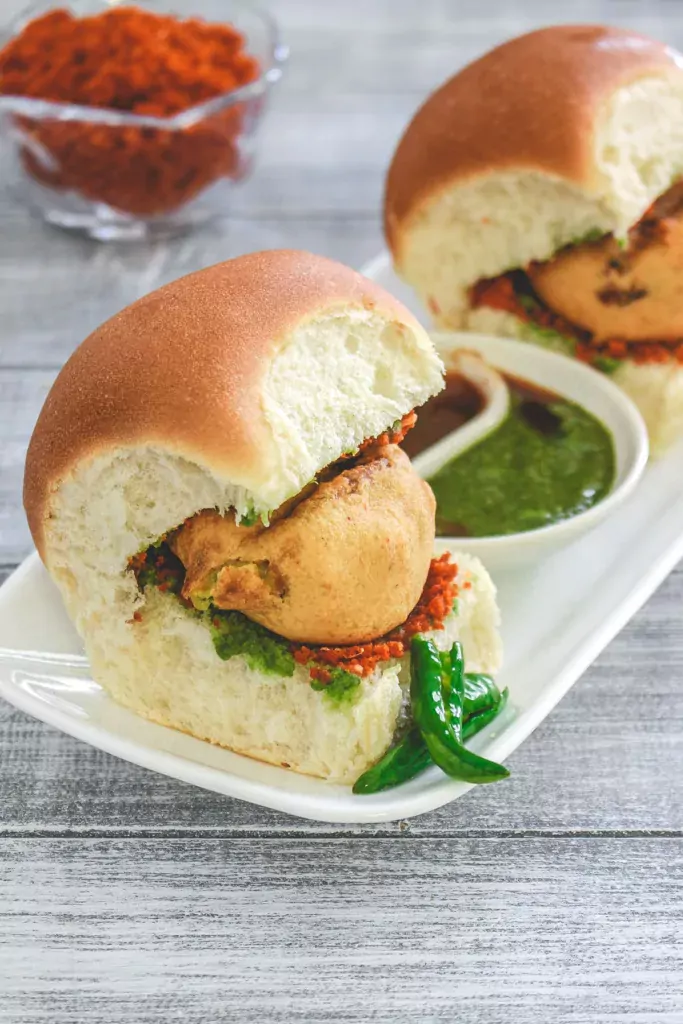1. Vada Pav: From Mumbai to the Streets of Seoul
Selling vada pav as street food in South Korea could be an exciting business idea, as it offers a unique and flavorful Indian cuisine experience to locals and tourists alike. However, a few things to consider before starting such a business exist.

Table of Contents
Firstly, you would need to research the local laws and regulations related to street food vending in South Korea. Different cities and regions may have their own rules and restrictions, so it’s essential to be well-informed and comply with all the necessary permits and licenses.
Secondly, you would need to find a suitable location for your food truck or stall. It’s important to choose a busy area with high foot traffic, such as a popular tourist spot or a busy commercial district.
Thirdly, you would need to source all the necessary ingredients and equipment for making a vada pav. South Korea may not have all the ingredients readily available, so you may need to import some items or find local substitutes. You’ll also need to ensure that you have the necessary kitchen equipment, such as a deep fryer and a food processor.
Lastly, you’ll need to market your business effectively to attract customers. You can use social media platforms to promote your street food business, collaborate with local businesses or food bloggers, and participate in food festivals and events.
Overall, selling vada pav as street food in South Korea can be a profitable venture if done properly with the right amount of research, planning, and execution.
Vada pav in South Korea as street food?
Yes, it is possible to sell vada pav in South Korea as street food, but you would need to comply with the local laws and regulations related to street vending. This may involve obtaining the necessary permits and licenses, as well as meeting health and safety standards.
Additionally, you’ll need to consider whether there is a demand for Indian street food and specifically vada pav in the local market. You may need to conduct market research to understand the preferences of the target audience and identify potential locations where you can set up your business.
It’s also important to ensure that you have access to the necessary ingredients and equipment to make a vada pav, as well as the skills and knowledge required to prepare and serve the dish in a safe and hygienic manner.
Overall, selling vada pav in South Korea can be a viable business opportunity, but it will require careful planning and execution to be successful.

What are the factors for selling vada pav in South Korea?
There are a few key factors to consider when selling vada pav in South Korea:
- Market demand: Before starting your business, it’s important to assess whether there is a demand for Indian street food, specifically vada pav, in the South Korean market. You can conduct market research to understand the preferences and tastes of the local audience. Location: Choosing the right location is crucial for the success of your business. You’ll need to identify areas with high foot traffic, such as tourist spots, busy commercial districts, or popular food streets.
- Permits and regulations: You’ll need to comply with the local laws and regulations related to street vending, which may involve obtaining the necessary permits and licenses, meeting food safety standards, and following other rules and regulations.
- Ingredients and equipment: You’ll need to ensure that you have access to the necessary ingredients and equipment to make a vada pav. Some ingredients may need to be imported or sourced locally, and you’ll need to have the right kitchen equipment to prepare and serve the food.
- Marketing and promotion: Once you’ve set up your business, you’ll need to market and promote it effectively to attract customers. You can use social media platforms, collaborate with local businesses or food bloggers, and participate in food festivals and events to gain visibility and attract customers.
By considering these factors carefully and planning your business accordingly, you can increase your chances of success when selling vada pav in South Korea.
What are the common food safety standards in South Korea?
South Korea has strict food safety regulations and standards to ensure the safety of food products consumed by its citizens. Some of the common food safety standards in South Korea include:
- HACCP (Hazard Analysis and Critical Control Points): This is a food safety management system that identifies and controls potential hazards in the food production process.
- Food labeling regulations: All packaged food products sold in South Korea must carry accurate and clear labeling that includes the name and address of the manufacturer, the ingredients, the nutritional information, and the expiration date.
- Food additives: South Korea has strict regulations on the use of food additives in processed foods. Only approved additives can be used, and they must be used within the approved limits.
- Food hygiene: Food businesses in South Korea are required to maintain high standards of hygiene to prevent contamination of food products. This includes regular cleaning and sanitation of food preparation areas, as well as proper storage and handling of food products.
- Food inspections: The Korean Food and Drug Administration conducts regular inspections of food businesses to ensure that they comply with food safety regulations and standards.
By following these food safety standards and regulations, businesses can ensure the safety and quality of their food products and maintain the trust of their customers in South Korea.

